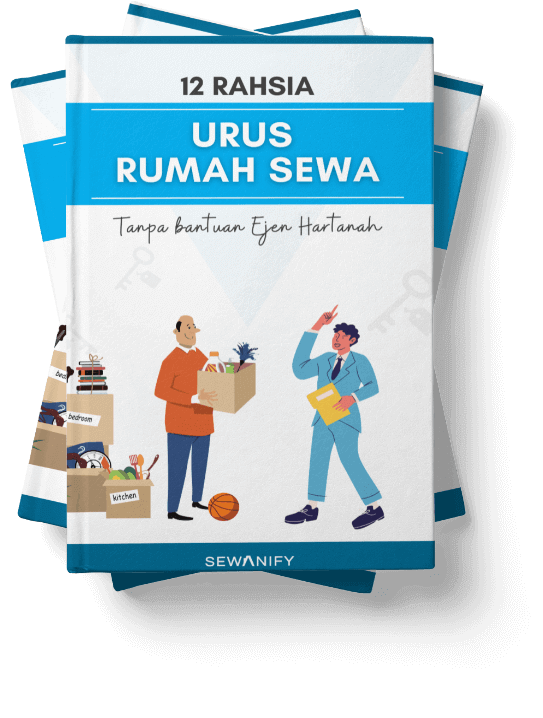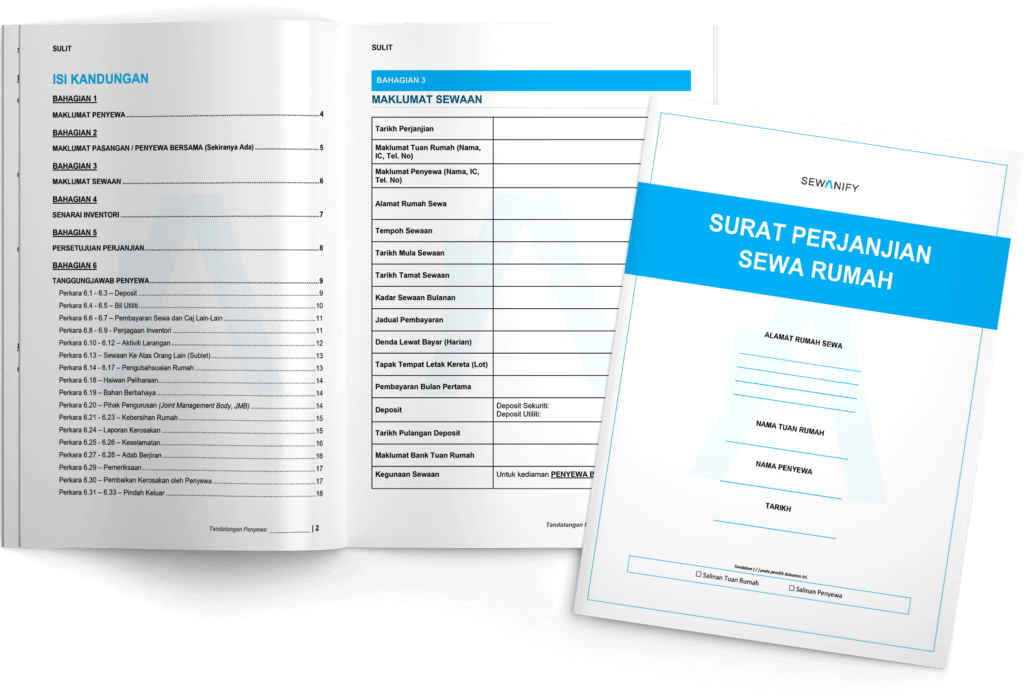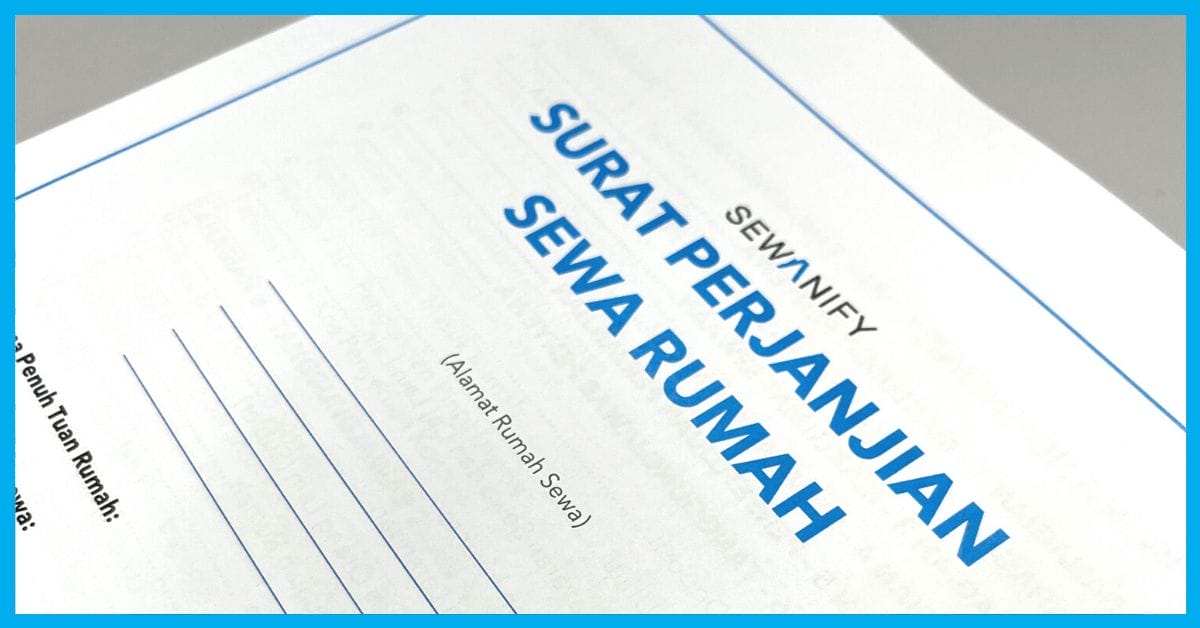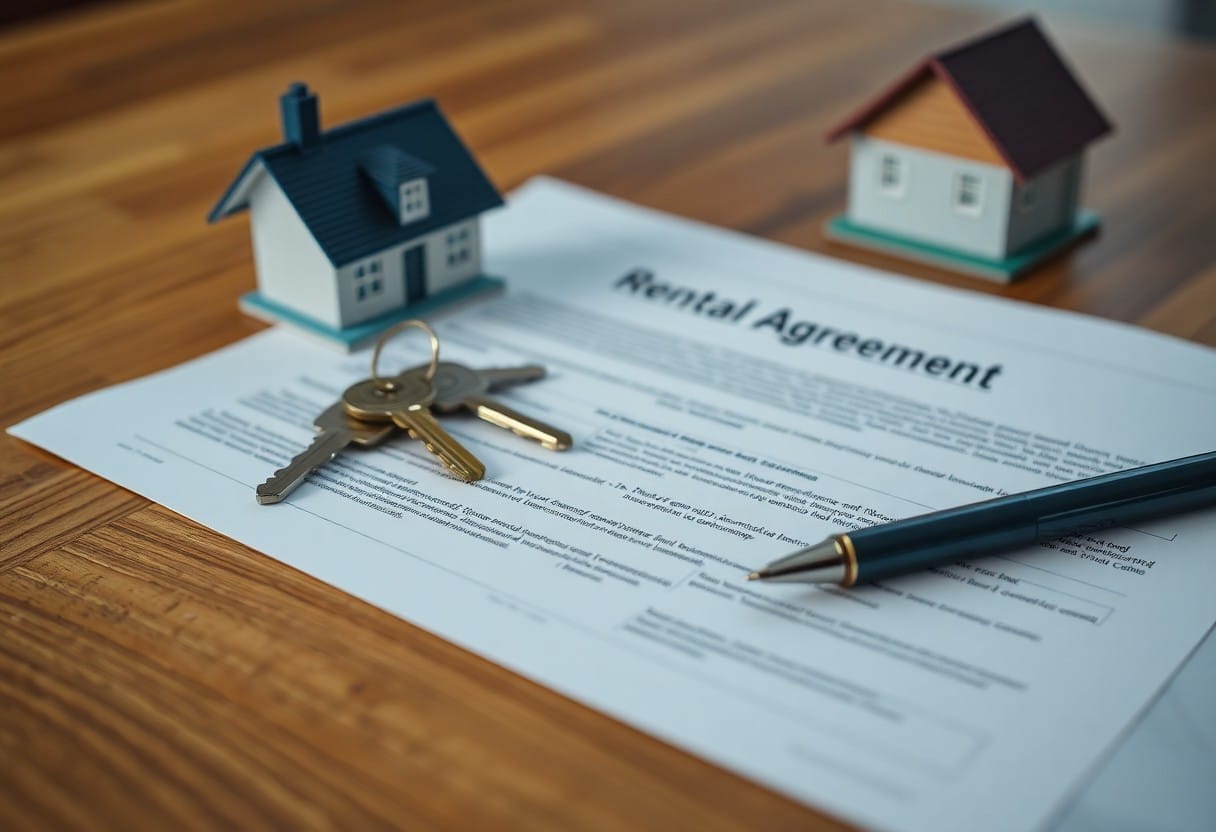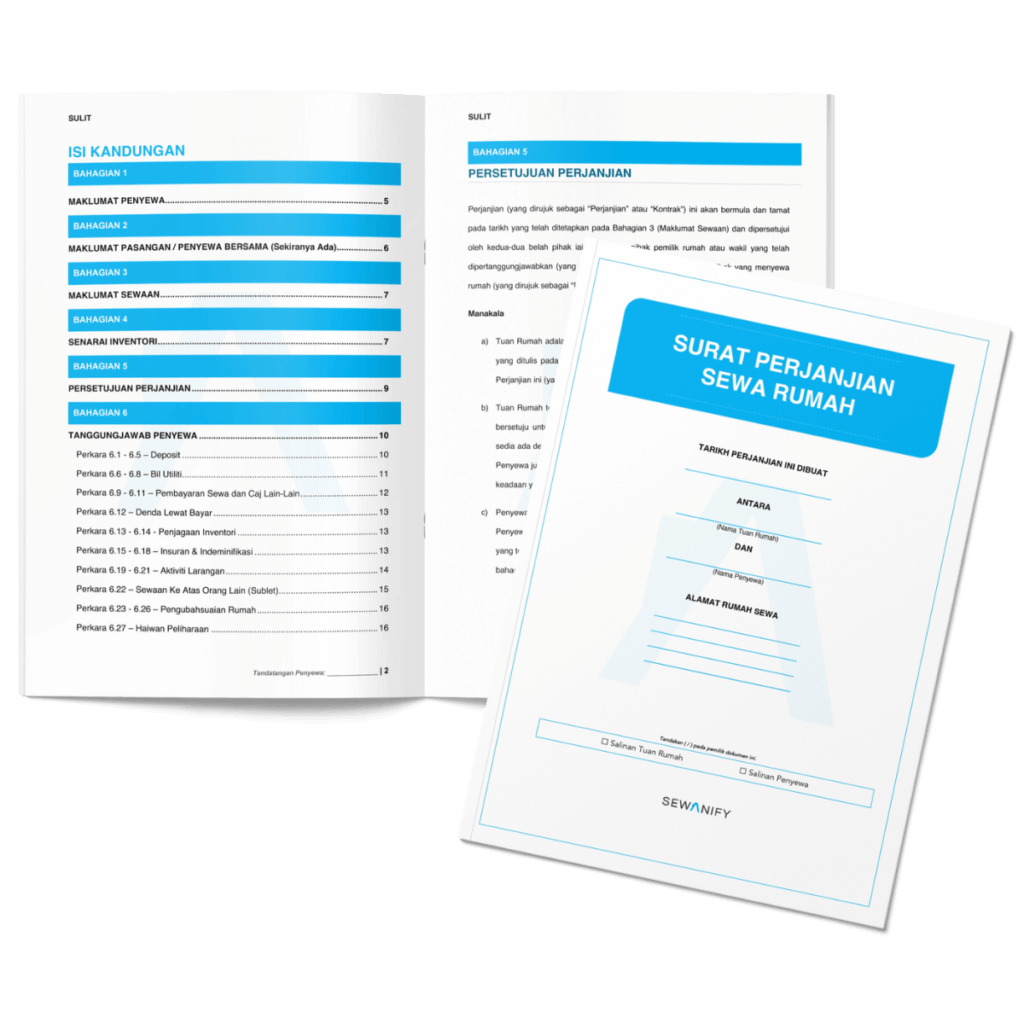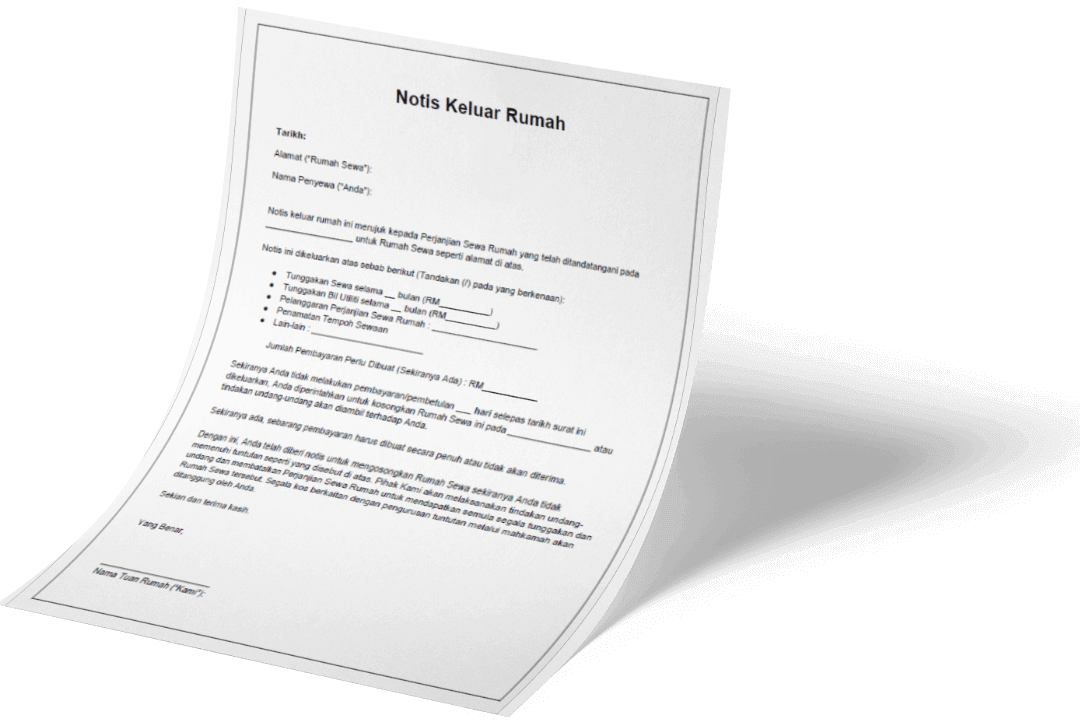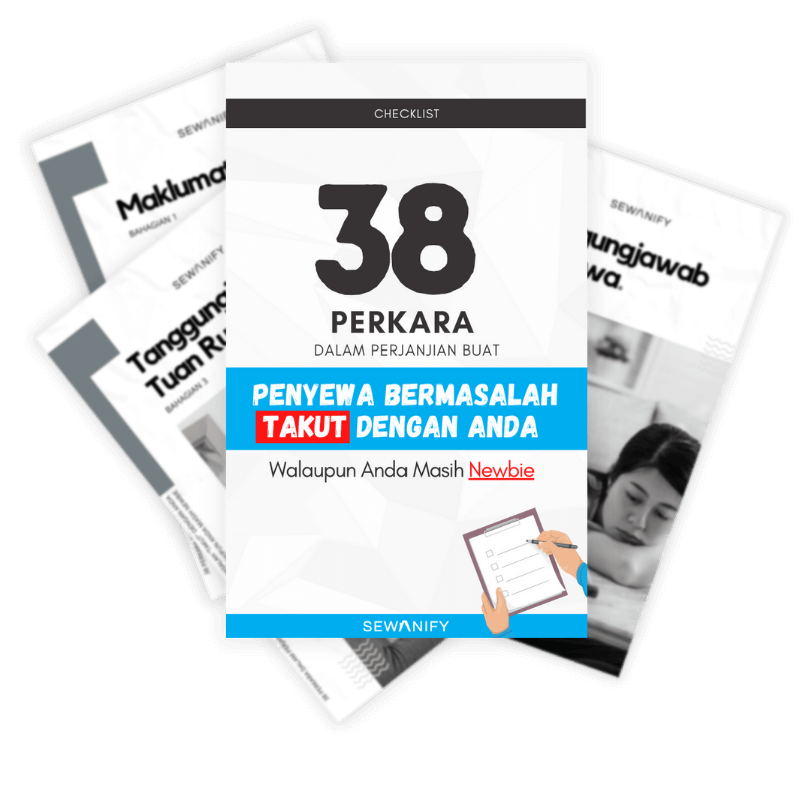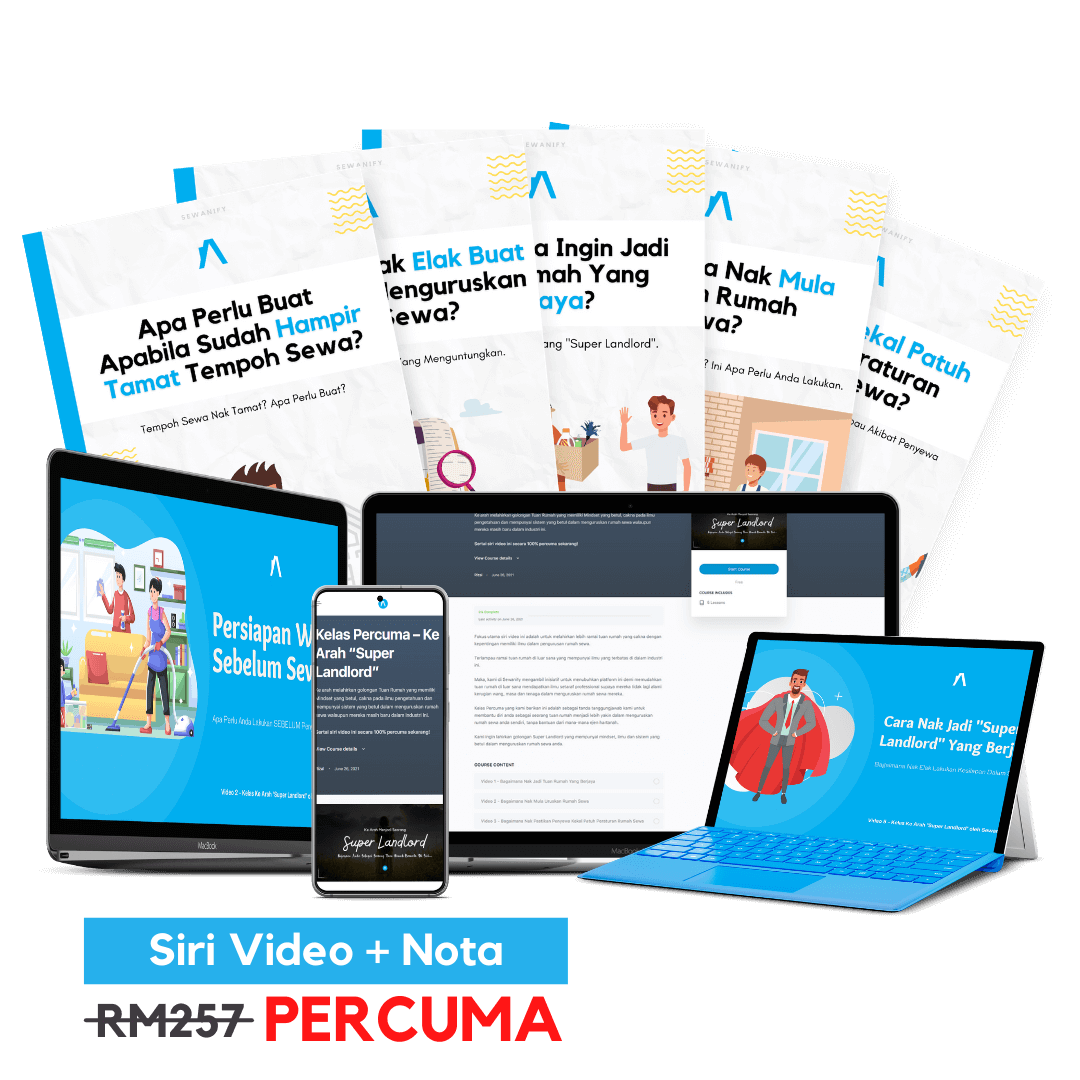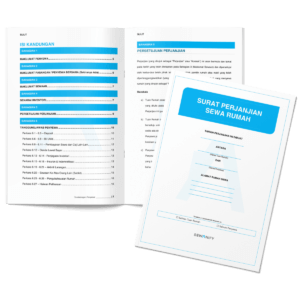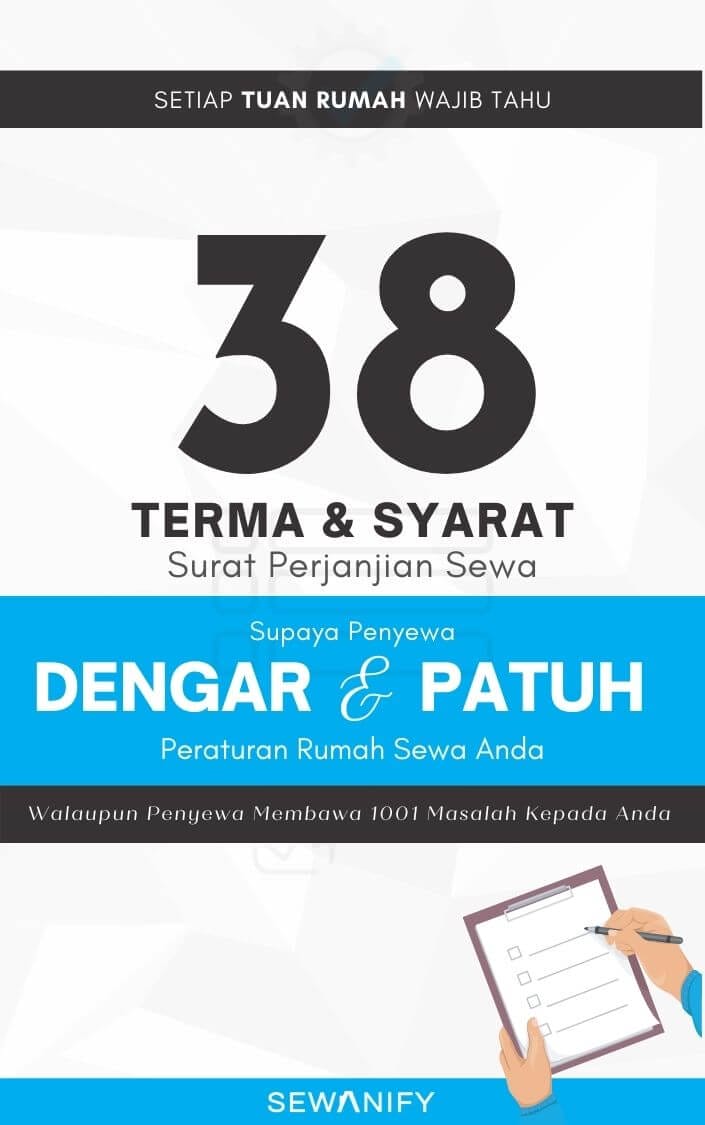A tenancy agreement is a contract (generally in written form) between a landlord and a tenant. It describes everything that both parties have agreed upon for the tenancy.
While no legislation in Malaysia enforces the use of a tenancy agreement, the document undoubtedly plays a vital role in protecting your right as a landlord.
Unfortunately, the lack of awareness in using a house rental agreement has caused many disputes between the landlord and the tenant in Malaysia.
Some landlords prefer verbal agreements because they think the process is more straightforward than preparing a tenancy agreement — their tenants are allowed to stay on their property without needing to sign any paperwork.
They do some handshake, some advice, jotting some notes, and the tenant is good to go for the rest of the tenancy period.
Common “trust” is what they believe in.
If nothing is wrong during the tenancy period, the landlord might not face any issues.
However:
When disputes are raised, confusion on the responsibilities or even the tenant starts to breach the verbal agreements; there’s nothing the landlord can do.
Fighting and challenging at the court level require more substantial evidence than just a verbal agreement.
Hence, a written agreement known as the tenancy agreement is what the landlords need to protect from troublesome tenants.
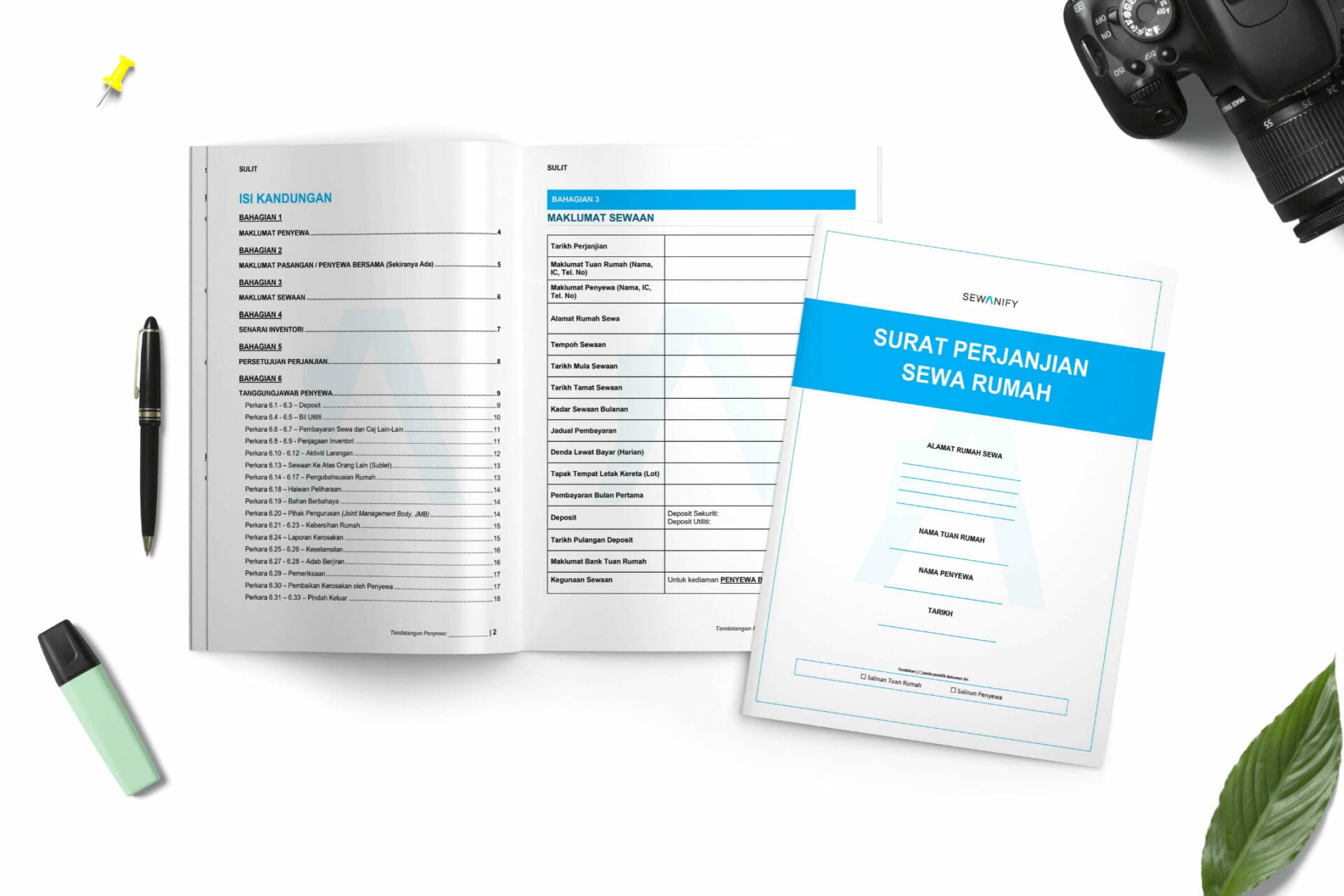
What is a Tenancy Agreement?
In Malaysia, a Tenancy Agreement is a legal contract between a landlord and tenant that outlines the responsibilities of each party during the agreed tenancy period.
There are a few compulsory items that are required to ensure the house rental agreement is usable under Malaysian legal contract law:
- Details of the Property
- Details of Rental
- Responsibilities and obligations for each party
- Two parties (landlord and tenant)
- Mutually signed agreement
To ensure that the document is as comprehensive as possible and covers almost most of the tenancy, landlords are advised to engage lawyers to draft the tenancy agreement document. Tenants, too, could hire their lawyer to do a check-and-balance on the sample tenancy agreement before signing.
However, the tenancy agreement fees charged by the legal firms are pretty substantial, and many landlords cannot afford them, especially for low-cost rentals. Hence, the landlords take this matter into their hands by drafting the tenancy agreement template themselves.
If you know what you are drafting, there’s nothing wrong with that.
Believe it or not, until today, there are no specific regulations in drafting the tenancy agreement. Hence, landlords or tenants are free to prepare the tenancy agreement template and get both parties consent.
How to use a tenancy agreement?
Once you have potential tenants for your rental unit, probably you’re thinking of signing the tenancy agreement immediately.
But wait! Hold your horses first.
There are several things that you should do before signing the tenancy agreement.
First, prepare a booking form once the potential tenant has confirmed to rent your house. This booking form will act as a confirmation from the tenant. The booking form is not a tenancy agreement. It is a way to ensure both sides have agreed to rent the unit out to that particular tenant while the landlord prepares the tenancy agreement.
Signing the tenancy agreement will take a while due to the time needed for the landlord to prepare the contract, explain and amend the terms & conditions (if any), stamping the tenancy agreement at the Inland Revenue Board (IRB) or Lembaga Hasil Dalam Negeri (LHDN) and returning it to the tenant.
Hence, the booking form is essential at the start to ensure the landlord is well-protected before the tenancy agreement has been fully prepared. You should include a booking fee as part of the booking form so that the tenant gives 100% commitment to the booking. We will discuss further the booking fee down below.
Now, let’s go through the content side of a tenancy agreement.
What should include inside a tenancy agreement?
A rental agreement should cover most aspects of the tenancy to prevent any dispute and misinterpretation of clauses in the future.
Every word should be written intentionally and in easy-to-understand, so both parties are well-equipped with the agreement’s content.
At Sewanify, we emphasize the importance of an easy-to-understand agreement that ultimately eases the landlords and tenants to execute and adhere to the contract. Our tenancy agreement template is drafted with a multitude of professional references from various consultants and legal firms to ensure the document is up to the industry standard.
If you are thinking of getting a sample tenancy agreement, do ensure the following are included in the document:
1) Details of the Property
This section highlights the specifications of the property, such as the property address (including unit number), number of rooms, size, parking lots, and others.
The property details ensure both parties know which property the rental agreement is referring to.
You may also include all your furnishings detail within your property area within this section. In Sewanify, we called it the List of Inventory.

In this list of inventory section, you should include every detail of the furnishings (even if your house is considered to be “unfurnish”) such as the fans, the lights, kitchen hob and hoods, refrigerator, sofa, dining table, aircond, etc.
This section’s importance is that the rental agreement binds all the furnishings in your rental property. If anything happens to the furnishings within the tenancy period, the tenants are fully responsible for the damages or losses of the furnishings. Hence, you can exercise the rental deposits to recover the losses; we will discuss on rental deposits matter further down below.
At Sewanify, we always advise our clients to ensure all the furnishings are captured inside the contract to prevent any disputes in the future.
The compulsory thing you should do:
Before signing the house rental agreement, ensure both parties thoroughly check and verify the List of Inventory. Carry out a detailed inspection for each furnishing to check its condition and if there are any imperfections or defects. This is to prevent disputes after the tenancy has ended when both parties will go through another round of inspection to check for any damages to the furnishings.
2. Details of the Rental
The next section of the tenancy agreement states the rental specifications, which include the rent payment, rental period, deposit amount, method of payment, late payment fee, etc.
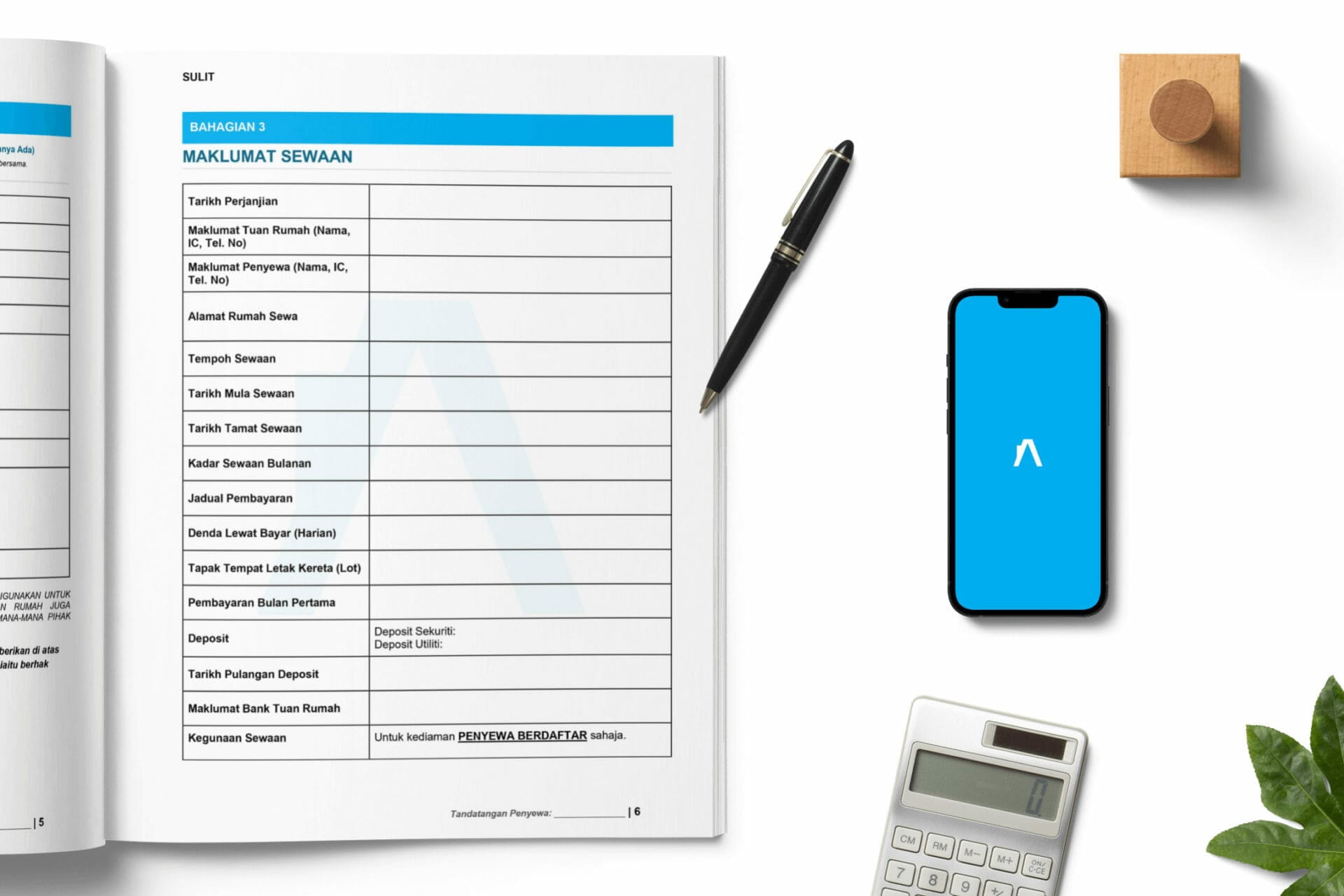
Rent Payment
State exactly the monthly rate the tenant has to pay, along with the payment due date.
In this section, you should include a buffer payment period (extra days to allow the tenant to make the rental payment).
Late Payment Fee
You might impose a late payment fee if the tenant did not pay the rent within the buffer payment period to ensure the tenant is well-disciplined in paying their dues.
The standard calculation method for the late payment fee is:
Daily late payment fee = Monthly rental rate / 30 days
Based on our experience and feedback from our clients, the late payment fee is a very effective method to force the tenant to pay their rent promptly.
Rental Deposit
What is the rental deposit?
A rental deposit is a REFUNDABLE amount the tenant pays at the start of the tenancy period. It acts as a fund to cover any unforeseen event such as the tenant breaching the contract, not paying the utility bills, stealing furnishings, or other things that might cause losses to the landlord.
You may use the following breakdown as part of the rental deposit sum:
- Security Deposit (Compulsory): To protect against damages and losses for the rental furnishings and if the tenant breaches any part of the contract that causes losses in monetary terms to the landlord.
- Utility Deposit (Compulsory): To protect against unpaid utility bills such as water or electricity.
- Pet Deposit (Optional): To protect against damages caused by the tenant’s pet.
The first two deposits are compulsory to be part of the house rental agreement for comprehensive protection against the tenant’s possibilities of wrongdoings and breaching the contract.
There are several methods used to exercise the deposits in Malaysia. Even if it is not part of the legal system in this country, you might benefit from these practices to manage your deposit:
- 2+1+1 (2 Months (Security Deposit) + 1 Month (Utility Deposit) + 1 Month (Advance))
- 1+1+1 (1 Month (Security Deposit) + 1 Month (Utility Deposit) + 1 Month (Advance))
- 2+1 (2 Months (Security Deposit) + 1 Month (Utility Deposit))
The choice of rental deposit practices is subject to your rental, whether fully, semi or unfurnished. Typically, we advise our clients with a fully furnished house to use the 2+1+1 method due to its higher risk of losses, especially to the furnishings.
Additionally, the 1 Month (Advance) payment is considered a convertible deposit which the tenant shall pay the sum once the booking has been made and will be converted to the first month of rent payment once they’ve moved in. Read the next point for more clarification.
Advance Payment (Booking Fee)
Advance payment is the first month of rent that the tenant should pay before entering the unit.
This may act as a non-refundable booking fee or earnest deposit when the tenant has confirmed to rent the house.
Remember:
The conversion of the booking fee to the first month’s rental shall be stated clearly inside the tenancy agreement or the booking form.
So, the standard practice in Malaysia is that the landlord will take upfronts before the start of the tenancy:
- Booking Fee: 1 Month’s Rent
- Security and Utility Deposits: 1 Month or 2 Months Rent
3. Responsibilities of the Landlord and Tenant
There are various responsibilities for landlord and tenant that covers from a minor thing like ethics with the neighbours to the most critical part of the tenancy, such as the rent payment and dispute management.
However, a few essential things need to be part of the tenancy agreement as below.
Landlord
- Payment of annual property tax
- House insurance
- Furniture and appliances in good condition
- House is safe to live in
- Not disturbing the privacy of the tenant
Tenant
- Pay rent on-time
- Comply with the rental agreement
- Taking care of the furniture and appliances
- Not doing any illegal activities
- Respect the neighbours
The list is not exhaustive, and you may include as many as possible that are tailored to your requirement.
Remember:
There is no right way to draft a tenancy agreement; hence you may draft the contract following the need of both parties.
Most importantly is that the terms & conditions set are easily understandable by both parties. Without proper understanding, both parties may stray from the actual agreement, which could lead to disastrous losses for either party. Because at the end of the day, the landlord and tenant will execute the tenancy agreement.
4. Agreement of Landlord and Tenant
Once all the terms & conditions have been set in the tenancy agreement, now is the time to sign the agreement.
You may execute this process before the tenancy period starts or on the first day, the tenant moves in.
As a responsible landlord, you have to explain to them what are the terms & conditions stated inside the rental agreement before both parties sign the document officially.
Trust us:
Answering their queries beforehand will elevate any potential disputes in the future. If you do this, you will reduce 50% of your headache of managing the tenants during the tenancy period.
5. Get It Legally Approved
Once the rental agreement has been signed, there is one more step for it to be legally approved in Malaysia as a lawfully bound contract document:
To get the rental agreement stamped at the IRB or LHDN.
How much is a LHDN duty stamping cost for a tenancy agreement?
The cost for stamping of tenancy agreement in Malaysia is calculated as the following:
1-year rental period
RM1 for every RM250 of the yearly rental above RM2,400. The stamp duty is free if the annual rental is below RM2,400.
Tenancy agreement between 1 to 3 years
RM2 for every RM250 of the yearly rent above RM2,400. The stamp duty is free if the annual rental is below RM2,400.
Over 3-years tenancy agreement
RM4 for every RM250 of the yearly rental above RM2,400. The stamp duty is free if the annual rental is below RM2,400.
Alternatively, you may use our stamp duty calculator here: Kalkulator Duti Setem LHDN.
What is the process of rental agreement stamping?
1. Go to https://stamps.hasil.gov.my/stamps/
2. Click Borang Permohonan > Penyeteman
3. Fill in your rental details (Click Sewa/Pajakan and select the nearest IRB/LHDN to your area and key in the tenancy agreement date)
4. Key in your rental details
Once completed, you may bring your tenancy agreement to the branch you selected through STAMPS. Payment shall be made at the IRB/LHDN counter.
You should take these steps once both parties have signed your tenancy agreement.
Summary
A tenancy agreement is an essential document you should have before finding potential tenants for your rental unit.
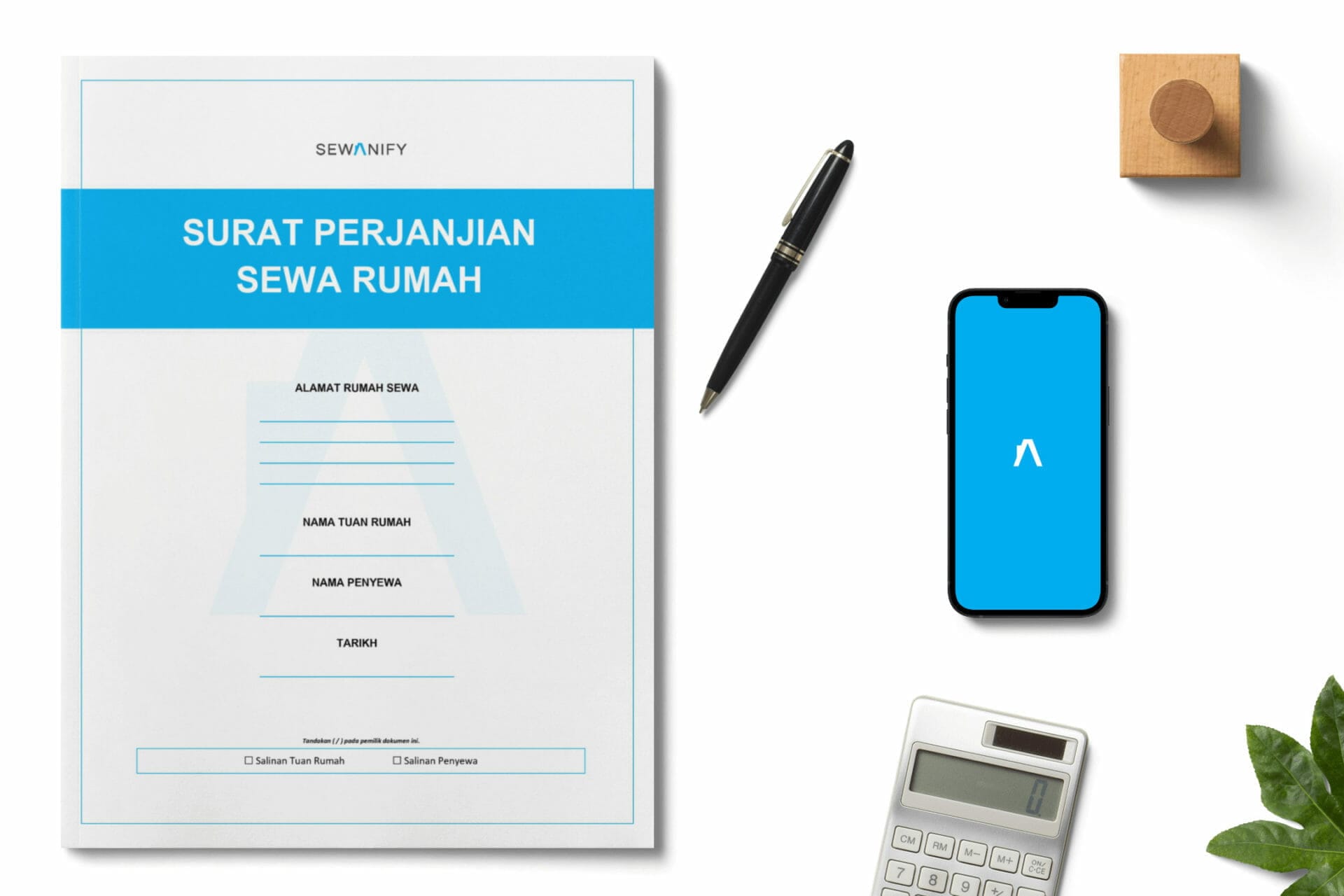
The document plays a vital role in ensuring your rental management sails smoothly throughout the tenancy period.
Hence, it will be more critical to ensure the rental agreement you have is up to the standard, which covers most of the disputable matters between the landlord and the tenant.
At Sewanify, we believe a tenancy agreement is the ultimate solution to prevent or minimize the damages and losses due to bad tenants. With that, we want to spread the awareness for most landlords to understand the tenancy agreement document from cover to cover fully so that they can stand on their feet without relying on lawyers to argue against any problematic tenants.
Our tenancy agreement at Sewanify is specially drafted with care and backed with many references from various legal teams and consultants. Even our rental agreement template covers the minor issue from respecting neighbours to having sufficient clauses to prevent the tenant from paying their dues late. All this is to ensure our users are fully covered from A to Z on any disputable matters during the tenancy period.


